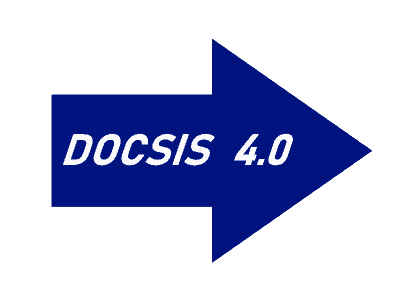
The standard is ready, but cable operators looking to cut costs and network investments are not.
Although major cable operators will gradually begin buying more advanced DOCSIS 4.0-compatible equipment to power their hybrid fiber-coaxial cable networks, some cable engineers are predicting no big hurry for the next cable broadband upgrade, suggesting the existing DOCSIS 3.1 standard is probably good enough for most of this decade.
A favorable regulatory climate under the Trump Administration has given cable companies a reprieve from pressure from Washington regulators and politicians pushing for more upgrades and competition. Cable operators have successfully slowed investment and upgrade schedules, convinced they are likely not going to face traffic congestion or serious threats from new competitors anytime soon.
DOCSIS 4.0 would double the maximum internet speed available from current cable broadband platforms to 10,000 Mbps download and 5,000 Mbps upload speed. The new standard would also dramatically cut network latency, an important factor for applications like video games. But equipment manufacturers and some cable operators don’t see a big hurry for upgrades on the horizon.
Tom Cloonan, chief technology officer of network solutions at CommScope told an audience at the Light Reading-hosted two-day virtual event: Cable Next-Gen Technologies & Strategies, DOCSIS 3.1 is adequate enough for cable operators to stick with through most of this decade, but “it will eventually run out of gas.”
Jeff Finkelstein, executive director of advanced technologies at Cox Communications, agreed, claiming DOCSIS 3.1’s useful life at Cox is at least five to seven years — up to a decade on certain more advanced cable systems equipped to devote more spectrum for upstream traffic.
Until cable operators decide customers need more broadband capacity and faster speeds, many will stick with DOCSIS 3.1 while they gradually upgrade portions of their network to be DOCSIS 4.0 ready. The key factor that will eventually push most operators to upgrade to DOCSIS 4.0 is internet traffic demand. If providers continue to see exponential traffic growth similar to the early months of the COVID-19 pandemic, upgrades will have to come in the next few years. If internet traffic growth can be slowed down, operators can stall upgrades until after 2025. Slowing upgrades will save operators money and DOCSIS 4.0 is designed to be launched at a relatively low cost, especially if network prerequisites can be gradually put into place.
It is also clear most major cable operators with the exception of Altice USA see at least a decade or more of useful life left in their existing hybrid fiber-copper coaxial cable networks. After that, some may elect to begin a move towards fiber to the home service.


 Subscribe
Subscribe
Well, ha ha. I’m working overtime this weekend to get my assignments done. If I still had Spectrum’s abysmal upload speeds, I’d be grinding my teeth.I guess they think people just watch You tube videos, check out Facebook and nothing else.
Just glad I lucked out and could get fiber to the home in my area.
When you’re a de facto monopoly in many markets, why actually do upgrades when you can just increase rates and have caps to rake in even more cash.
“We’re the Cable Company. We don’t Care. We don’t have to.”
Starlink can’t come fast enough.
Starlink won’t save you. It has the latency of 4G with the data speeds of…also 4G.
Fact is, top-line download speeds are definitely enough for current use cases on a D3.1 network (or, rather, ~32 channels of D3.0 plus another 94 MHz of D3.1 for higher tiers).The issue right now is uploads, which are enough of a bottleneck that Cox dropped upload speeds in some areas from 35 Mbps to 10 Mbps on their top tier. That’s still fixable with D3.0/3.1, but getting a cable system set up for mid- or high-split is no mean feat. I think some cable companies are holding their breath waiting for demand to subside, rather than taking the effort to… Read more »